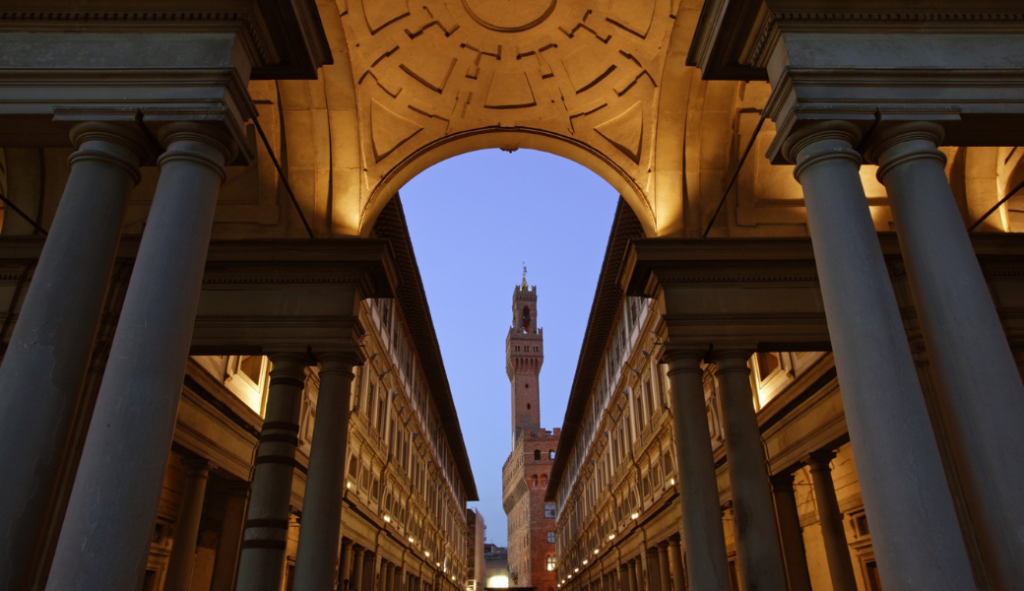Until December 17, 2024, the Uffizi Gallery will have evening openings every Tuesday. From 6:30 PM to 9:30 PM, the museum can be seen in a new light, making the experience even more special and unforgettable. In the summer months, when the night falls later, it will be possible to visit the Uffizi halls illuminated by the sunset. If the artworks and the museum itself are already stunning, imagine them bathed in the light of the Golden Hour?
Like the Uffizi, the Galleria dell’Accademia will also have evening openings, always on Tuesdays until 10 PM, and on Thursdays until 9 PM. Since this is not a usual occurrence, the nights will likely be less crowded than daytime visits, allowing you to see Michelangelo’s David calmly and without stress, as well as have easier access to other artworks in the museum.
Must-See Works at the Uffizi
The Uffizi houses the most important collection of artworks from the 13th century, extending through the Renaissance. Giotto, Botticelli, Leonardo da Vinci, Michelangelo, Raphael, Titian, and Caravaggio are among the illustrious artists featured at the Uffizi. The building, commissioned by Cosimo I to consolidate the administrative and judicial offices of the government, was constructed by Giorgio Vasari and completed by Bernardo Buontalenti and Alfonso Parigi.
Here are the must-see works:
The Birth of Venus
This iconic work of the museum was painted by Sandro Botticelli in 1486. It is the archetype of Renaissance beauty. Venus, on her shell, assumes the classic pose, with a face that seems to reflect the features of Simonetta, the wife of Mario Vespucci, cousin of the explorer, and beloved by Giuliano de’ Medici.
The Annunciation
This is one of the earliest works of the ingenious Leonardo da Vinci. What is most impressive is the attention to detail that extends from the background to the meadow, rich with meticulously represented flowers.
The Doni Tondo
This is the only painting by Michelangelo preserved in Florence. It was probably created for the baptism of Maria, the daughter of the Strozzi-Doni family.
The Ognissanti Madonna
Giotto’s Maestà from 1310 is undoubtedly revolutionary. The drapery is the main detail that gives three-dimensionality to this majestic work. The arrangement of the angels around the Madonna, the hierarchy of the figures, and the plasticity symbolize a connection to Byzantine art, yet they open up a new way of interpreting art.
Bacchus
The figure of the god is portrayed as a young man seated on a triclinium, surrounded by the typical elements that characterize him. Caravaggio, in his innovative style, depicts him with almost stark realism.


Comments
Thank you!